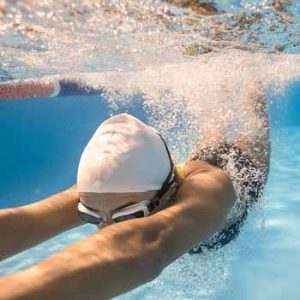
More evidence that low-calorie sweeteners are bad for your health
Studies show that artificial sweeteners can raise the risk of hypertension, metabolic syndrome, type 2 diabetes and heart disease, including stroke.

Natural Health News — New evidence shows that swimming can relieve pain and improve quality of life for people suffering from fibromyalgia.
While other forms of exercise have been evaluated for their therapeutic potential in fibromyalgia, swimming hadn’t been evaluated with much scientific rigour. The results of this new trial showed swimming was as beneficial as walking, the positive effects of which have clearly been demonstrated.
The new study published in the Archives of Physical Medicine and Rehabilitation involved 75 sedentary women aged between 18 and 60 years who had fibromyalgia. They were divided randomly into two groups: 39 practiced freestyle swimming and 36 undertook moderate open-air walking. Both groups undertook their particular exercise three times a week for 12 weeks. The 50-minute sessions were overseen by physical education professionals specialising in rheumatology.
» Exercise is a key component in effective fibromyalgia treatment, and walking is the most well researched form of beneficial exercise or sufferers. Other exercises such as swimming have not been rigourously assessed
» A new study has shown that swimming can be as beneficial as walking in relieving pain and improving the quality of life for fibromyalgia sufferers.
» This is good news for sufferers who may find walking difficult – for instance those with knee athrosis.
Over 12 weeks self-reported pain intensity fell by nearly half in both groups. There were also statistically significant – and similar – improvements in both groups for quality of life for instance in levels of social interaction and mental health. The physical health of women in both groups – as measured by aerobic capacity of the lungs and other measurements – also improved.
Hard to treat
Fibromyalgia is a condition that physicians find difficult to diagnose and treat – not the least because the condition does not have a specific test for diagnosis. It is about ten times more common in women than men (affecting around 5% of women), and it can be disabling.
The chronic non-inflammatory pain which fibromyalgia sufferers experience is due to a malfunctioning of the system that transmits and modulates the transmission of nervous stimuli between the body and the brain. This means that a normally painless prod or poke to a leg or arm may be felt as painful stimulus by someone with this condition.
In addition to magnified pain signals, the patient may experience spontaneous pain.” says lead researcher Jamil Natour, a professor of rheumatology at the Federal University of São Paulo (UNIFESP), “Diffuse tenderness with no anatomical explanation lasting for at least three months is a defining feature of this disease.”
Those suffering from the disease often also experience sleep disorders. Reduced levels of serotonin (a key neurotransmitter in mood regulation and pain sensitivity) are frequent, as well as alterations in the autonomic nervous system, which controls bodily functions such as heart rate, blood vessel contraction, sweating, salivary flow and intestinal movements. In addition, some 30% of people with fibromyalgia suffer from depression. Taken together, all these symptoms strongly affect the quality of fibromyalgia patients’ lives and make the disease a significant public health issue.
Exercise is key
Natour and his team have made several studies of exercise as a treatment for fibromyalgia. In an article published in 2003, Natour’s team showed that walking was better than stretching not only to reduce pain but also to improve depression and other emotional aspects of patients with fibromyalgia, in addition to enhancing cardiorespiratory fitness, as expected. Another study performed by the group in 2006 showed that deep-water running was also a good option for treatment of the disease.
“The results of this clinical trial showed swimming was as beneficial as walking, whose positive effects have clearly been demonstrated,” Natour concludes. “Physical exercise is an essential component of any treatment for fibromyalgia, and plenty of studies have demonstrated that low-impact aerobic exercise offers the most benefits. However, not everyone likes or is able to do the same kind of physical activity. Swimming can be a preferable option for a person who suffers from both fibromyalgia and knee arthrosis, for example.”

Please subscribe me to your newsletter mailing list. I have read the
privacy statement